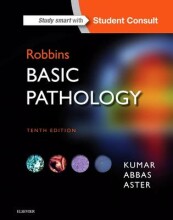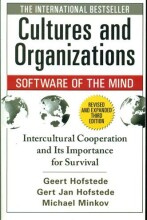Summary: Robbins Basic Pathology | 9780323353175 | Kumar, et al
- This + 400k other summaries
- A unique study and practice tool
- Never study anything twice again
- Get the grades you hope for
- 100% sure, 100% understanding
Read the summary and the most important questions on Robbins Basic Pathology | 9780323353175 | Kumar, Abbas, Aster
-
2 Cell injury, Cell Death and Adaptations
This is a preview. There are 27 more flashcards available for chapter 2
Show more cards here -
Hoe wordt hyperplasie getriggerd?
Getriggerd door groeifactorenFunctionele vraagHormonale stimulatieMechanische triggers.
Voorbeeldborstvergroting tijdens zwangerschap. -
Hoe verloopt de intrinsic pathway of apoptose?
Veroorzaakt door stress of schade van de cell zelf of door een tekort aan survival signals. Mitochondriën zijn heel belangrijk. -
Hoe verloopt de extrinsic pathway of apoptosis?
Door signalen van buiten de cel. -
2.1 Introduction to pathology
This is a preview. There are 4 more flashcards available for chapter 2.1
Show more cards here -
What is the difference between Etiology and Pathogenesis
Etiology refers to why a disease arises and pathogenesis describes how a disease develops -
2.3 Causes of cell injury
This is a preview. There are 5 more flashcards available for chapter 2.3
Show more cards here -
What is the difference between Hypoxia and Ischemia?
Hypoxia refers to oxygen deficiency and Ischemia refers to reduced blood supply -
2.4 Sequence of events in cell injury and cell death
This is a preview. There are 33 more flashcards available for chapter 2.4
Show more cards here -
Why do cells and intracellular organelles typically become swollen in Reversible injury
Because they take inwater as a result of the failure of energy-dependent ion pumps (Na-K- ATPase ) -
Name 3 common characterisations of irreversible cell injury
1. inability to restore mitochondrial function
2. loss of structure and functions of the plasma membrane and intracellular membranes.
3. the loss of DNA and chromatin structural integrity. -
During Necrosis, the contents of the cell are leaked. These contents may cause further damage to the surrounding cells. How does your body react to this?
Necrosis elicits inflammation , that is induced by substances
released from dead cells and which serves to eliminate the debris and start the subsequent repair process.
Theenzymes responsible for digestion of the cell are derived fromlysosomes and may come from the dying cells themselves or fromleukocytes recruited as part of theinflammatory reaction. -
Name a characteristic cause of Coagulative necrosis
infarcts (areas of necrosis caused by ischemia) in all solid organs except the brain. -
What is characteristic for Liquefactive necrosis
Dead cells are completely digested, transforming the tissue into
a viscous liquid that is eventually removed by phagocytes. Often it is associated with focal bacterial or fungal infections E.g. Brain infarct
- Higher grades + faster learning
- Never study anything twice
- 100% sure, 100% understanding
Topics related to Summary: Robbins Basic Pathology
-
Cell injury, Cell Death and Adaptations - Sequence of events in cell injury and cell death
-
Cell injury, Cell Death and Adaptations - Mechanisms of cell injury and cell death
-
Cell injury, Cell Death and Adaptations - Intracellular accumulations
-
Inflammation and repair - Overview of inflammation: definitions and general features
-
Inflammation and repair - Acute inflammation
-
Inflammation and repair - Mediators of inflammation
-
Inflammation and repair - Chronic inflammation
-
Hemadynamic disorders, thromboembolism and shock - Edema
-
Hemadynamic disorders, thromboembolism and shock - Hemostasis and thrombosis
-
Hemadynamic disorders, thromboembolism and shock - Embolism
-
Hemadynamic disorders, thromboembolism and shock - Shock
-
Disease of the immune system - Cell and Tissues of the immune system
-
Disease of the immune system - Hypersensitivity: immunologically mediated tissue injury
-
Disease of the immune system - Autoimmune diseases
-
Disease of the immune system - Rejection of transplants
-
Neoplasia - Cancer genes
-
Neoplasia - Hallmarks of cancer
-
Blood vessels - Atherosclerosis
-
Heart - Ischemic heart disease
-
Heart - Valvular heart disease
-
Heart - Cardiomyopathies and myocarditis
-
Hematopoietic and lymphoid systems
-
Lung - Obstructive lung (airway) diseases
-
Lung - Pulmonary infections
-
Lung - Lung tumors
-
Oral cavities and gastrointestinal tract - Esophagus - Esophagitis
-
Oral cavities and gastrointestinal tract - Stomach - Gastropathy and acute gastritis
-
Female genital system and breast - Cervix
-
Female genital system and breast - Uterus - Proliferative lesions of the endometrium and myometrium
-
Central nervous system - Neurodegenarative diseases
-
Central nervous system - Deel over neurodegeneratieve ziekten

































